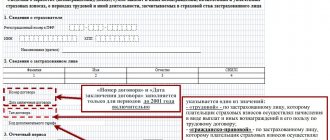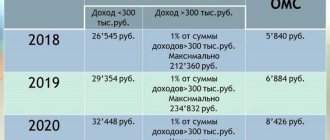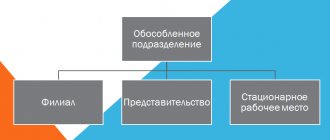Salary accrual
The first task is to accrue salary. Almost all postings for salary include account 70, which is responsible for payroll calculations. Since the account is included in the category “forming the finances of the enterprise,” it is passive. By debit we reflect the amounts written off (payments, payments to insurance funds, etc.), and by credit we will accrue wages.
Account 70 takes into account absolutely all payments in favor of employees (compensations, vacations, salaries, bonuses, etc.).
Analytics is carried out for each employee or for a structural unit as a whole. When calculating wages, the following accounting entry is used
- Dt 20, 26, 23, 25, 26, 29, 44
- Kt 70
Debit is responsible for the employee’s place of work. 20 – if the employee is involved in the main activity, 23 – if an employee of auxiliary production. 25 are expenses for general production, 26 are administrative expenses, and 29 are service expenses. 44 account is used by trading enterprises.
Now about the amount. If analytical accounting for the 70th account is not maintained, then the posting is made for all funds that are accrued for all employees employed in this area of the enterprise. Those. if the main production of the salary is accrued in the amount of 400,000 rubles, then there will be a posting
- Dt 20,400,000 rubles
- Kt 70
But more often accounting is kept for each employee. So, if Ivanov I.I. - an employee of the sales department will have to receive, without deduction of taxes, 38,000 rubles, then the following accounting entry will be made.
- Dt 44 38,000 rubles
- Kt 70 (Ivanov. I. I.)
This is how the accrual of salary and bonuses is taken into account if payment is made from the company’s funds, which the company will then include in the cost of the product. If a separate premium is formed, which will not affect the cost of production, then the following entry is drawn up:
- According to Dt 91.2
- According to Kt 70
For the amount of the premium. With this posting we attribute payroll to additional expenses. This method is used in companies that pay bonuses to their employees at the expense of profits, without considering these costs as production costs.
Also, there are specific wiring that are used very rarely.
- According to Dt 97
- According to Kt 70
This is a salary that is taken into account as a deferred cost. Most often, these are employees who are developing something that can bring money to the company in the future.
- Dt 99
- Kt 70
Posting for the accrual of salary to liquidators of emergencies and other natural disasters.
- Dt 69
- Kt 70
Salary in accounting
The accrual and payment of wages, as well as deductions from it, are reflected in account 70 “Settlements with personnel for wages”. This follows from the chart of accounts approved by order of the Ministry of Finance of Russia dated October 30, 2000 No. 94n. When calculating salaries, the accountant uses the credit of account 70. When paying wages, when withholding personal income tax, alimony and other things, the accountant uses the debit of account 70.
Account 70 analytics must be carried out for each employee of the company.
Insurance premiums should be reflected in account 69 “Calculations for social insurance and security”, and personal income tax - in account 68 “Calculations for taxes and fees” subaccount “Personal Income Tax”.
Issuance of wages
The payment of wages occurs in accordance with the internal documents of the organization, regardless of when the accrual occurred.
There are only two transactions for issuing a PO:
- According to Dt 70
- According to Kt 50
This is if funds are issued in cash from the cash desk of a credit institution. Now rarely used.
- According to Dt 70
- According to Kt 51
If wages are paid non-cash, they are credited to the employees’ bank account. Increasingly used.
The accounting entry means that the debt to employees was reduced by the amount of cash issued. Also, the advance amount is written off in the same way from accrued wages.
How to display payment of wages, taxes and deductions in transactions
These postings are reflected in the debit of account 70 and the credit of the corresponding accounts. They show a decrease in the organization's wage debt to employees.
| Account Dt | Kt account | Wiring Description | Transaction amount | A document base |
| 70 | 50 | Posting for issuance from the payroll office | 254500 | Payroll, cash order |
| 70 | 51 | Salaries were transferred to employees' bank accounts (bank cards) from the company's account | 50000 | Certificate of payment, payment order, agreement with the bank |
| 70 | 68.01 | Personal income tax withheld from employee salaries | 45500 | Help-calculation |
| 70 | 71 | The amount previously not returned by him, issued on account, was withheld from the employee’s salary | 2500 | Employee advance report |
| 70 | 73 | The amount of compensation for material damage caused by him was withheld from the employee | 5500 | Internal investigation report, order for damages |
| 70 | 75 | Purchase of company shares by employees as payment for wages | 20000 | Statements from employees, decision of the general meeting of shareholders |
| 70 | 76 | Deductions from employees' salaries in favor of third parties (membership and insurance fees, alimony, repayment of utility bills, other payments by court decision, etc.) | 10000 | Help-calculation |
| 70 | 94 | The amount of material damage was withheld from the identified culprits | 5000 | Internal investigation report, order for damages |
In accordance with the Labor Code of the Russian Federation, the employer is obliged to pay wages at least twice a month. The advance amount should not be less than the salary or tariff rates for the first half of the month worked. The advance payment scheme is shown in Fig. 1.
Rice. 1. Procedure and timing of advance payment.
Deductions from wages can be made only in cases provided for by law. Art. 138 of the Labor Code of the Russian Federation establishes restrictions on the amount of deductions from wages:
- in standard cases – no more than 20% of the salary amount;
- in special cases provided for by law, as well as when deducting from an employee’s earnings under several executive documents - no more than 50% of the salary;
- when an employee serves correctional labor, pays alimony for minor children, or compensates for damage as a result of a crime - no more than 70% of the salary.
Read more: When is sick leave paid for pregnancy?
The vast majority of organizations have hired employees. Therefore, the payment of remuneration to employees, deductions from wages, and the accrual of social contributions to funds are common practices in the course of ongoing work. Below we will talk about what entries for wages and taxes need to be reflected in accounting, what entries should be made.
Withholding personal income tax
Since the employer is also the tax agent of his employee, he must withhold and pay the personal income tax amount. In Russia, the basic personal income tax rate is 13%. Therefore, the employer must withhold personal income tax from the accrued wages.
This is formalized by wiring
- According to Dt 70
- According to Kt 68 subaccount 01
For an amount equal to 13% of accrued wages. Tax deductions are taken into account (for example, per child – 1,400 rubles). In order to correctly calculate the amount of personal income tax payable, if there are tax deductions, you need to subtract the amount of tax deductions from the amount of the accrued salary and then multiply by 13%.
So, if an employee has a child, then he is entitled to a deduction of 1,400 rubles. With a salary of 23,000 rubles, the amount of personal income tax payable will be equal to: 23,000 – 1,400 * 13% = 3,068 rubles
If there are any other deductions, for example, alimony, then the personal income tax amount will be paid first, and only then, other deductions will be calculated from the after-tax salary.
Payroll and Chart of Accounts
In order to provide detailed clarity about accounting entries and accounting, it is necessary to define and understand the purpose of the “Chart of Accounts”. By the way, it is precisely this that is a normative document approved by order of the Ministry of Finance of the Russian Federation. By the way, there are certain instructions for its use, which were also approved by the Ministry of Finance.
In simple terms, the Chart of Accounts is a kind of list of all possible accounts that are used in accounting. Here, in this document, there is a description and list of correspondent accounts for each of them. Correspondent accounts are a kind of separate components between which movements of cash savings occur in accounting. That is, exactly those where accountants make postings.
It is also worth noting that all accounts have their own unique number, which is subsequently taken into account and indicated in the primary documentation, in special columns , for example, if we talk within the framework of this topic, the number of correspondent accounts will be written on pay slips, expense and receipt orders and etc. Such numbers can also be found on accounting registers.
As a rule, employee wages are written off from the cost of production, so the following accounts correspond to 70:
- If we are talking about a manufacturing enterprise, then they use:
- 20 Main production.
- 25 General production expenses.
- 26 General business “administrative” expenses.
- 29 Service industries and farms.
- When postings are made in trading enterprises , they use 44 “Sales expenses”.
Then the posting will look like D (debit) 29 (25.44 or others) K (credit) 70.
Moreover, the wiring principle also depends on the specifics of the company. That is, the posting can be made for the total amount of payments under the salary, or it can reflect payments to each employee individually.
Payment of insurance premiums
In addition to paying wages, the employer is obliged, but at his own expense, to pay money to the compulsory social and health insurance funds for his employees.
Insurance premiums are an enterprise expense and also form the cost of production. Accordingly, accrual will occur by postings:
- By Dt 20 (23, 26..)
- According to Kt 69.1; 69.2; 69.3.
Depending on which fund the funds will be sent to, one or another subaccount will be used.
- 69 subaccount 1 – Social expenses. insurance.
- 69 subaccount 2 – Pension.
- 69 subaccount 3 – Medical.
Payment of insurance premiums includes closing 69 accounts and transferring funds from 51 accounts. Thus, accounting records will be compiled:
- According to Dt 69.1 – 69.3
- According to Kt 51
This posting means that accrued insurance premiums were paid from the organization's current account. Up-to-date information on the tariffs of insurance premiums, deadlines for their payment and documents that must be provided is indicated in 212-FZ.
Here you will find all the information about preparing a salary certificate, you can.
To properly maintain personalized records, read this article.
What were insurance premiums in 2020? Read here.
Examples of accounting entries for accounting for wages and taxes on them
So, the Retrans advertising agency pays employees salaries for September 2020. In this company it is not customary to make entries for each of the employees, and wages here are paid through the cash register. The amount of remuneration in the company for the year is no more than 600-700 thousand rubles.
| Accrued | Personal income tax | Paid | |
| Zaitsev | 33 000 | 4 290 | 28 710 |
| Volkov | 44 000 | 5 720 | 38 280 |
| Kuropatkin | 55 000 | 7 150 | 47 850 |
| Total: | 132 000 | 17 160 | 114 840 |
30.09.2015:
- D20 K70 132,000 Salary accrued.
- D20 K68 17,160 personal income tax.
- D20 K69 29040 Pension Fund.
- D20 K69 6732 FMS.
- D20 K69 3567 FSS.
Postings for fixed payments of individual entrepreneurs
Individual entrepreneurs have the right not to keep accounting records. Accordingly, such an operation as the calculation of fixed payments does not require the individual entrepreneur to prepare transactions. If an entrepreneur nevertheless makes entries for his own accounting of income and expenses, the easiest way is to use the general rules. That is, when calculating fixed payments, the individual posting generates the following:
- Dt 20, 26, 44 - Kt 69.02.7 - fixed contributions to the Pension Fund;
- Dt 20, 26, 44 - Kt 69.03.1 - fixed contributions to the FFOMS.
Entrepreneurs are not required to transfer payments to other extra-budgetary funds.
Postings for transfer of contributions
The responsibilities of employers include not only the timely calculation of contributions. It is also required to transfer the amounts received on time. The deadline for payment of insurance premiums is no later than the 15th day of the month following the accrual. Delay will entail penalties, and in some cases may lead to additional fines.
Payment of insurance premiums is made through the organization's current account. When the debt is repaid, the following entry appears in the accounting records:
Dt 69 - Kt 51 - insurance premiums are listed, posting uses the corresponding subaccounts.










